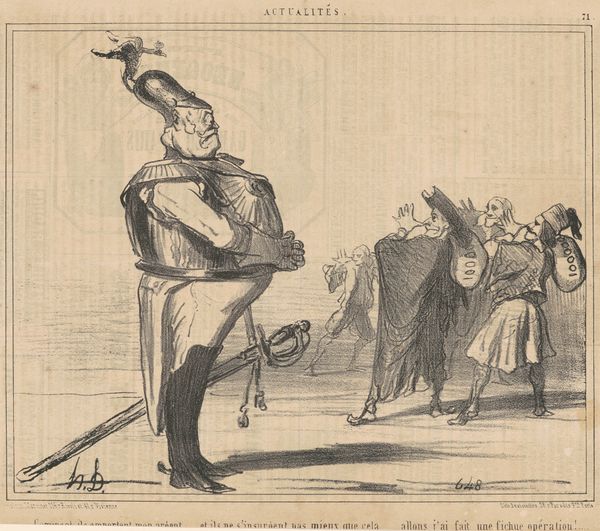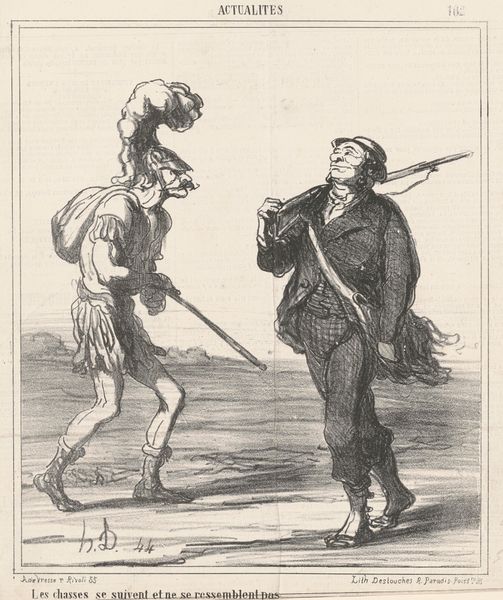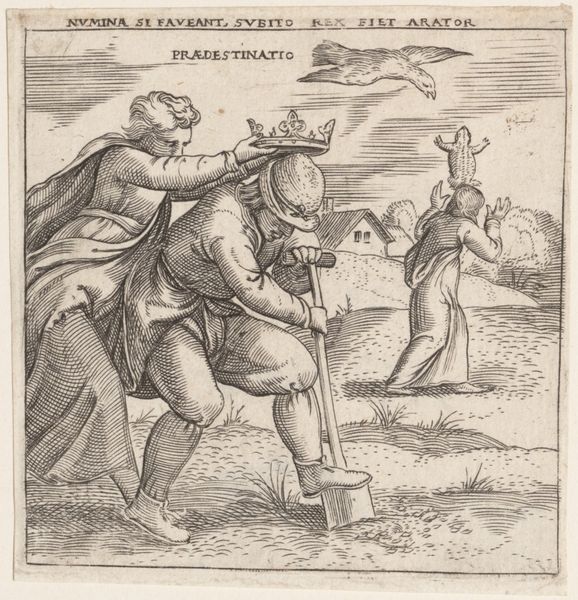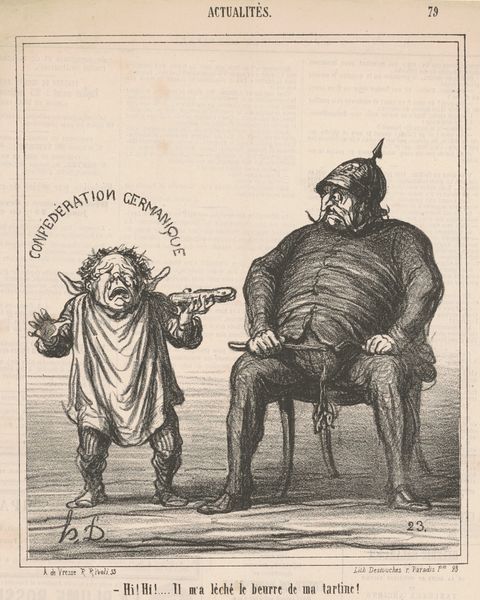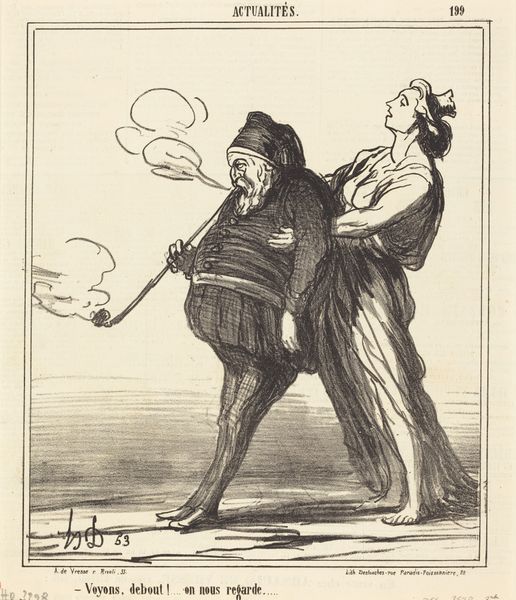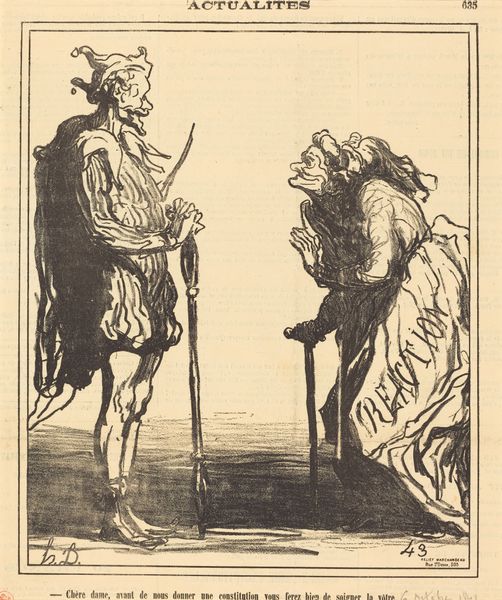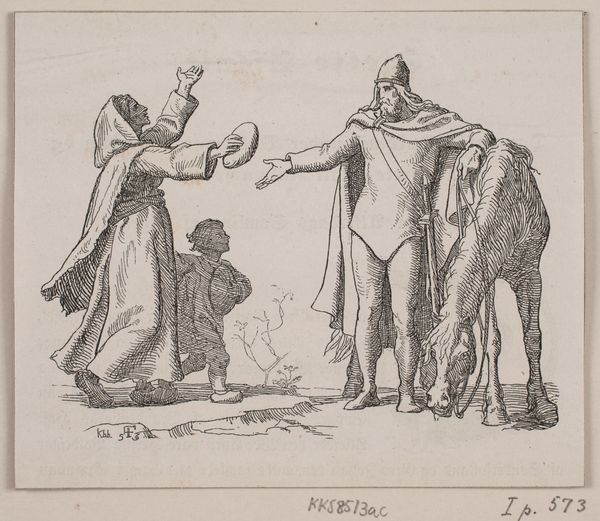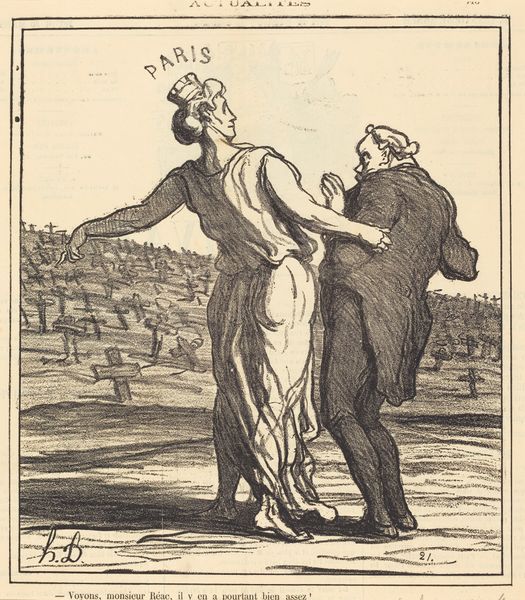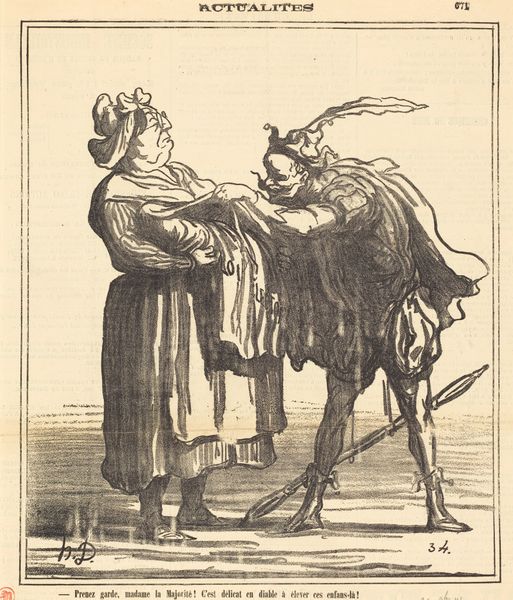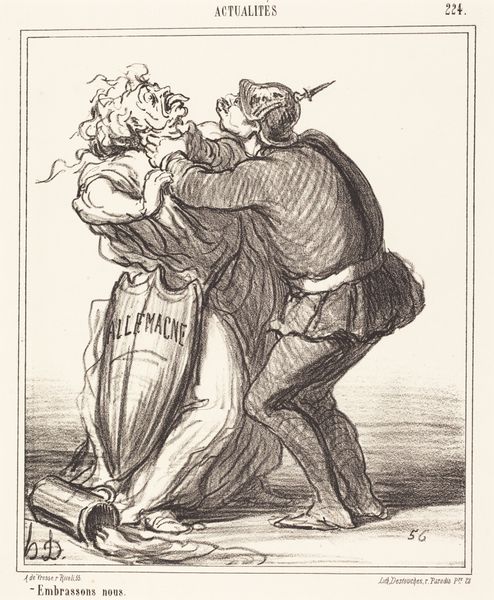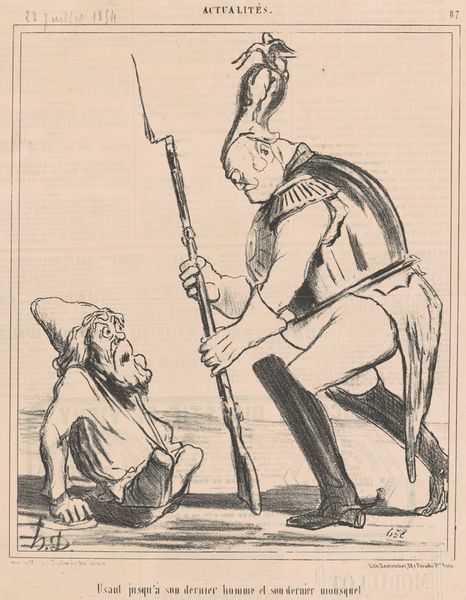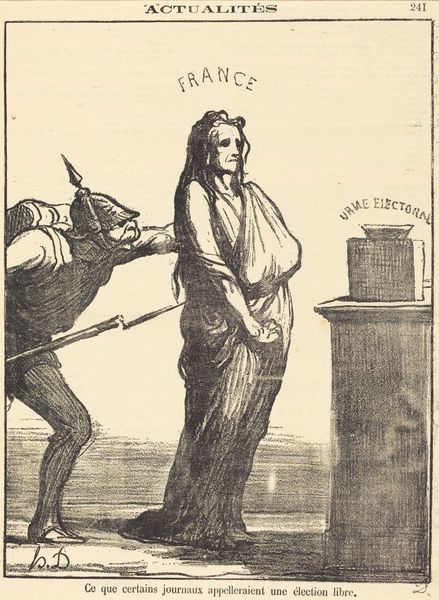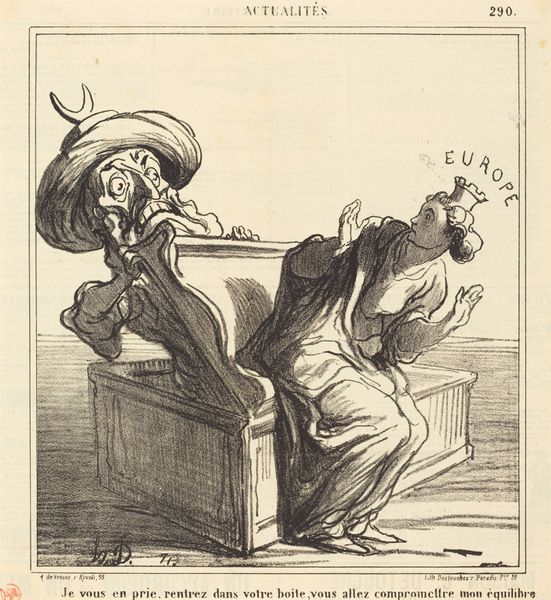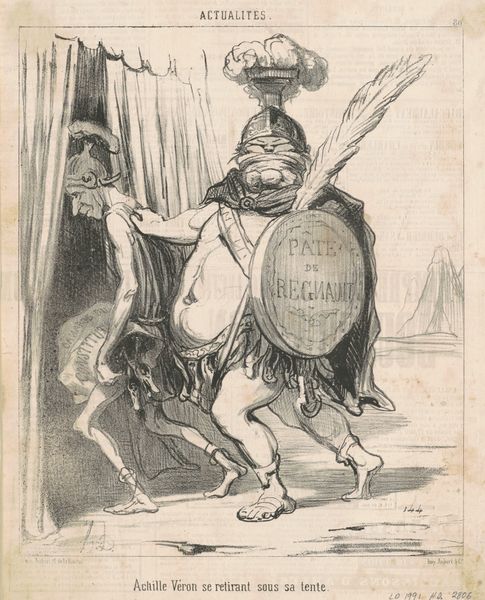
drawing, lithograph, print
#
drawing
#
lithograph
# print
#
caricature
#
romanticism
#
genre-painting
Copyright: National Gallery of Art: CC0 1.0
Curator: Welcome, everyone, to this striking lithograph, "La partie de saute-mouton," by Honoré Daumier, dating to the 19th century. It's a powerful print teeming with political undertones. Editor: Immediately, the exaggerated contrast seizes my attention, particularly the dramatic angularity in the soldier's posture. The sweeping curves of the bent figure also create a strange balance in the composition. Curator: Indeed. Daumier, a master of caricature, used lithography to comment on the political climate. The print is titled "La partie de saute-mouton" – "leapfrog" – but it clearly references more than just a children's game. The figure on the left is Prussian soldier wearing Pickelhaube with pointed spike – this detail connects this image with Franco-Prussian war and the process of dehumanization of German soldiers through caricature imagery during this period Editor: The formal devices serve Daumier so well. I notice how he used contour and texture to emphasize the strain on the stooped figure and arrogance of the Prussian one. Light and dark serve to highlight their different facial expressions—the dark wash to emphasize his features. It amplifies a sense of the individual within each figure, in the middle of caricaturistic interpretation Curator: Absolutely. The print appeared during a time of growing tension between France and Prussia, with the Franco-Prussian War on the horizon. Consider also, that this piece stems from a specific history of anti-German sentiment during this period. It's fascinating how visual culture intertwines with real-world events. Editor: So, he weaponized form itself, by exaggerating physical characteristics and exploiting shadow to push emotional understanding to create this complex message? I love the efficient precision he put in the composition! Curator: Precisely. What's more, prints like these were circulated widely in newspapers, impacting public perception of both domestic and foreign policy. They offer vital perspectives of 19th-century sociopolitical complexities. Editor: The pure design, even divorced from historical context, captivates. This speaks to the work's enduring artistic power, even for viewers unfamiliar with its original context. It goes well beyond its social agenda to remain artistically relevant. Curator: A brilliant testament to art's multi-faceted role – a fusion of social critique and exceptional artistry. Editor: Yes, seeing it today helps me to reflect how an image can contribute in political and cultural dialogues.
Comments
No comments
Be the first to comment and join the conversation on the ultimate creative platform.
